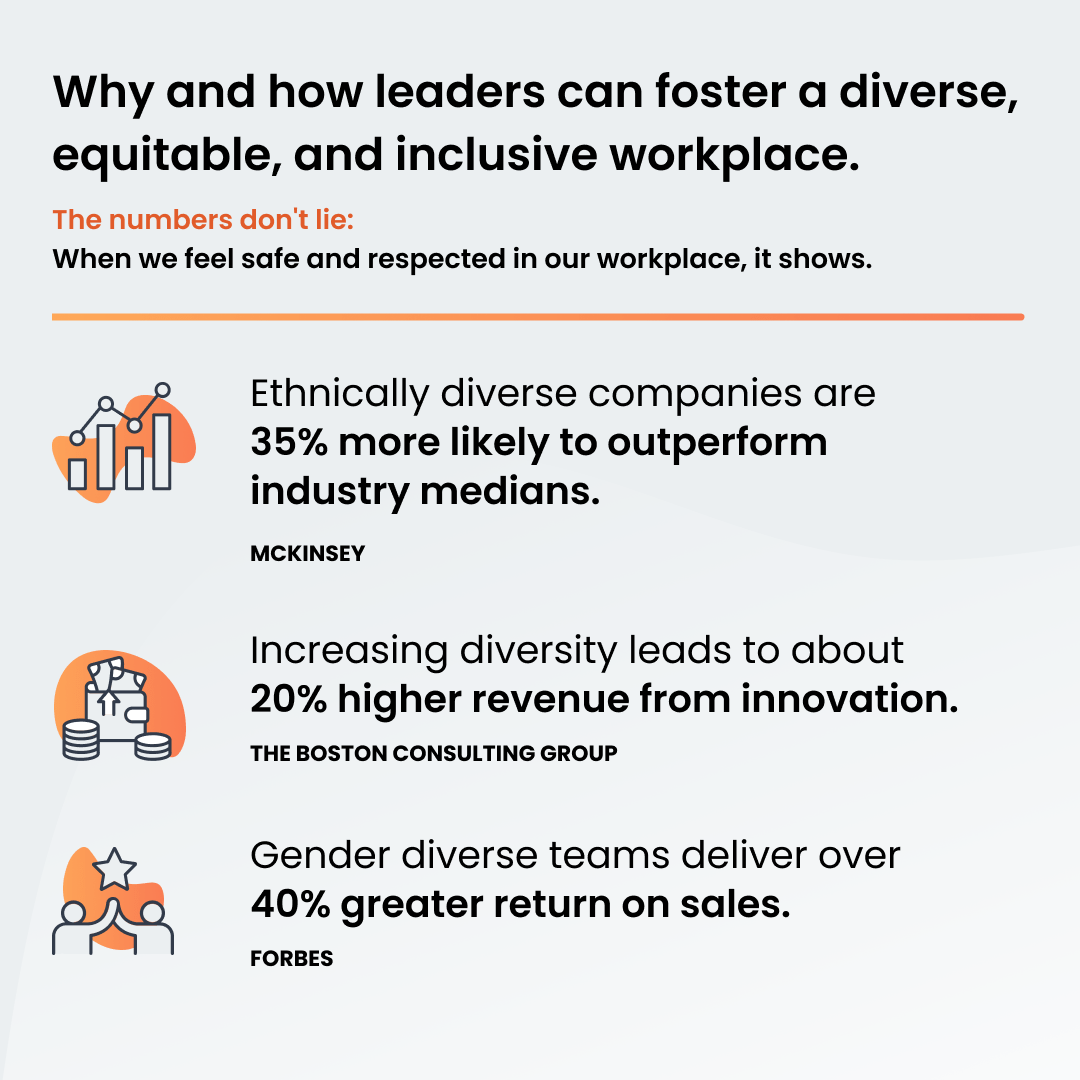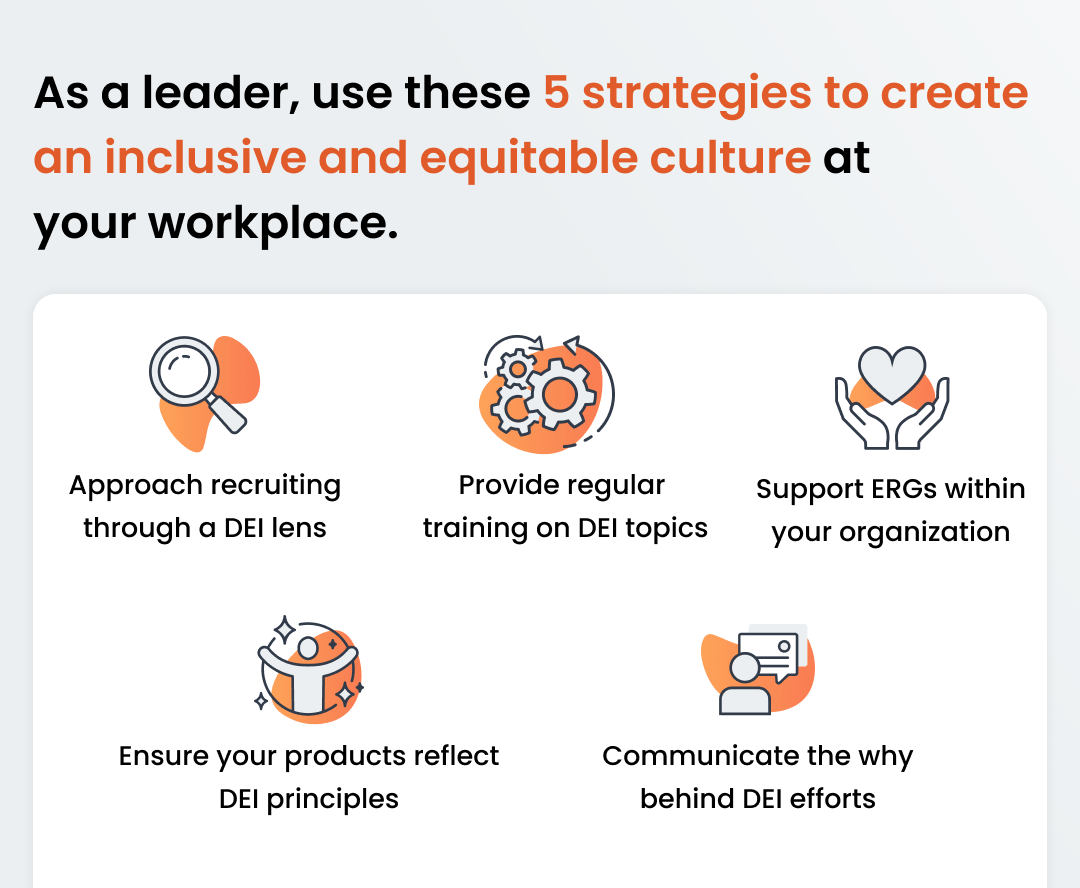Looking to build or enhance your leadership and development program? Our Leadership Development Toolkit can help.
Did you know 76 percent of job seekers say they care about diversity when looking at companies and job offers? That’s according to a study by Glassdoor. And, when employees feel included, they’re 1.3 times more likely to stick around, according to The Center for Talent Innovation.
Diversity, Equity and Inclusion (DEI) isn’t just a feel-good buzzword—it’s a real game-changer. The Boston Consulting Group found that businesses with diverse teams generate about 20 percent more revenue from innovation. Their 2024 report showed that a systematic approach to diversity, equity, and inclusion (DEI) drives long-term impact and profitability.
Look at the Leaders. “Leaders” are defined as folks with the power to shape things, from CEOs to managers. Is that you? They help grow, rally the team, and ensure DEI initiatives are carried through. It’s all about your company leadership setting targets backed by evidence, and staying accountable.

And, yes, we see it—there has been a notable decline in DEI-dedicated budgets since the peak periods following 2020. Some reports are saying companies are “quiet quitting DEI.” It’s one thing to know diversity is essential to business, but the last four years have shown us that follow-through isn’t always happening.
- Some companies may still see DEI efforts as just another expense on the books rather than a wise investment. Many are even facing pushback in budgeting.
- According to Gartner, 51 percent of DEI leaders say their biggest hurdle is getting business leaders to follow up on DEI initiatives. (Like herding cats, trying to get everyone on the same page!)
But if you’re a leader of any kind at your organization, and you’re committed to using your influence to foster a diverse and inclusive culture, these strategies can help.
5 ways your leadership can catalyze policies, processes, and people to create a more inclusive workplace
Clearly communicate the business purpose of DEI work
When leaders show employees that DEI supports a business strategy to serve customers, it drives buy-in. It’s a good sign if your leaders are relentless in this mission because McKinsey shows companies with a diverse gender and ethnic representation in their workforce are crushing it: They’re 35 percent more likely to outperform their competitors. And get this—companies with more women on their boards? They’re 27 percent more likely to outperform financially. The proof is in the numbers.
At OpenSesame, diversity is our secret sauce. Our diverse team helps us reach more customers and offer top-notch learning opportunities worldwide. Our employees know that by representing the communities we serve, we’re not just doing good—we’re boosting business.
Focus on recruitment and talent pipeline
Good leaders cast a wider net when hiring, making sure they attract and keep top-notch talent from all walks of life. They don’t wait for diverse candidates to appear magically—they invest in education and training to attract more people from underrepresented groups.
And really, it’s common sense that our workplaces should look like the world we live in. It turns out that job seekers think so, too. When a company prioritizes diversity in its hiring game plan, it’s not just good for its reputation—it’s a magnet for top talent.
At OpenSesame, leaders examined hiring processes to root out sneaky unconscious biases and broaden horizons to attract talent from all backgrounds and regions. They beefed up the bonus program to encourage more diverse recommendations. More passionate talent is rolling in, bringing fresh perspectives and ideas. OpenSesame leadership also invests in the talent pipeline: Our internship programs give young people from underrepresented communities a chance to work in tech—and who knows—one of them may be our next leader.
Guarantee ongoing Leadership and development support for every person
Once someone is new, you’ve got to make sure they feel at home. Good leaders aren’t just about calling the shots—they’re about recognizing and valuing every single person’s input and experience and making sure every people manager does the same.
We’re constantly growing and learning at OpenSesame, and our current onboarding process focuses on making everyone feel included and empowered to reach their full potential from day one. We ensure that leaders directly engage with employees through mentoring and coaching. Plus, of course, we provide employees access to all the online resources they desire for training.
By investing in employee resource groups (ERGs)
According to Glassdoor, mentions of ERGs (Employee Resource Groups) in company reviews have shot up sixfold since 2019. ERGs bring people together to share ideas, support one another, and help educate the entire organization.
ERGs at OpenSesame are a big deal. They allow our team to acknowledge and celebrate our differences. Our active ERGs are a popular mainstay of employee inclusion. OpenSesame also empowers our ERG leaders with new leadership skills and resources to support their communities, and our celebratory ERG Week has been a tremendous success.
Prioritize inclusive principles in your products and services
It’s all about spreading the DEI love beyond your turf. While DEI work focuses on the employee and hiring side, it isn’t just about your internal team—it’s about partners, customers, everyone, really. It might mean training your sales teams to support customers’ own DEI efforts. It can also mean implementing a supplier diversity program to prioritize relationships with more suppliers, including minority-owned, women-led, disabled, veteran-owned, or LGBTQIA+. It’s all about giving everyone a seat at the table.
By supporting diverse suppliers, we’ve found we can break down some barriers for our OpenSesame partners. As for opening up access to diversity, equity, and inclusion material, DEI is front and center in our online learning course catalog, making it easier than ever for customers to dive in. Our latest DEI webinar is on 19 June.

Achieving any DEI outcomes requires continuous learning, especially from leadership. But when it’s working, the value to customers suddenly skyrockets because you’re not just a company—you’re a vibrant, diverse group of people better able to solve the problems.
Level up your leaders with these resources
Designed for leaders eager to be intentional and pivotal in building inclusivity through everyday moments, our upcoming webinar, It’s What I Do That Matters: Behaviors of Inclusive Leaders, on 19 June will explore the fundamental behaviors that define inclusive leaders and receive practical advice on implementing these behaviors effectively.
Going a step further, our Leadership Development toolkit has everything you need for starting, improving, and scaling a leadership development program at your organization. In it you’ll find:
- A free series of courses from our exclusive publishers
- 50 must-have skills for budding leaders
- Book recommendations for a leadership book club
- Templates, tips, and tricks to help your program flourish






